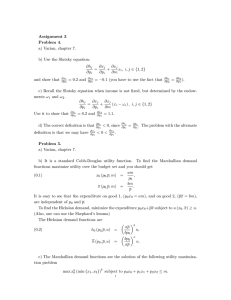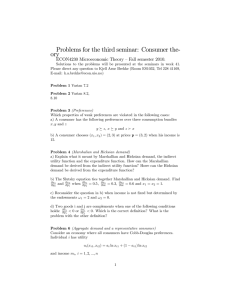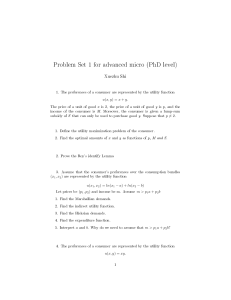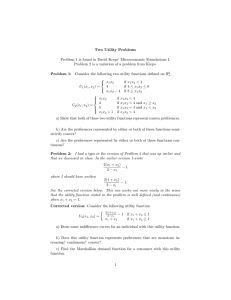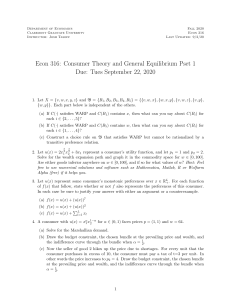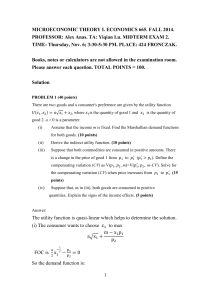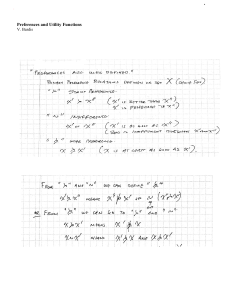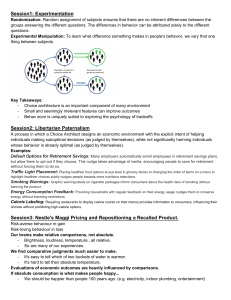Economics Problem Set: Demand, Utility, and Consumer Choice
advertisement
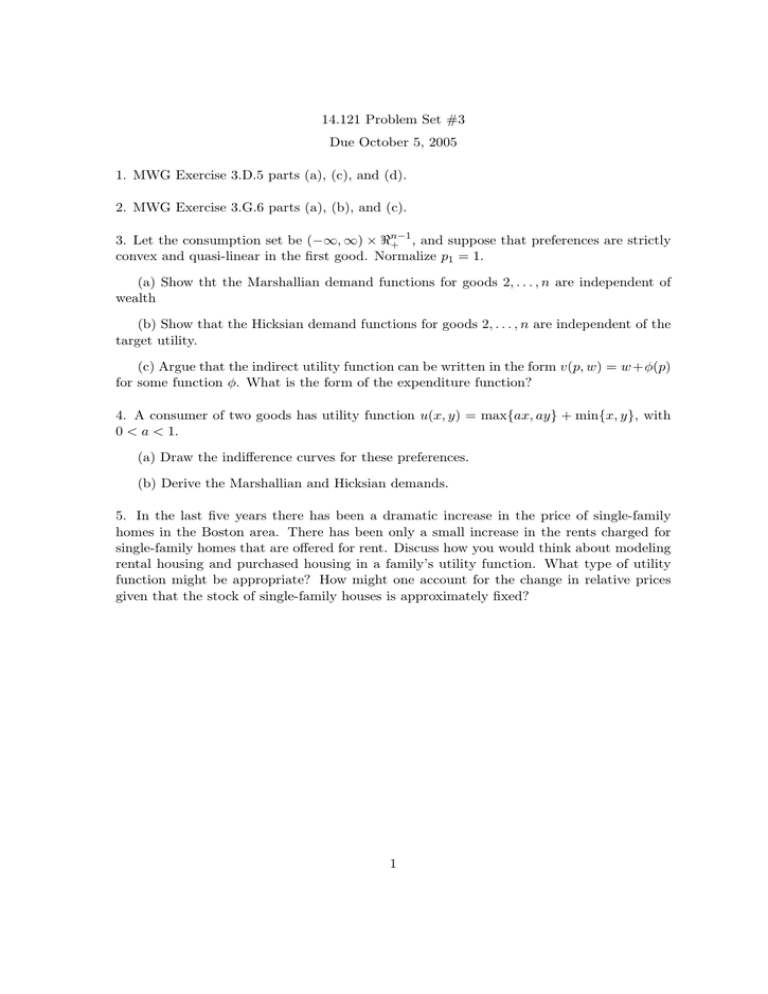
14.121 Problem Set #3
Due October 5, 2005
1. MWG Exercise 3.D.5 parts (a), (c), and (d).
2. MWG Exercise 3.G.6 parts (a), (b), and (c).
3. Let the consumption set be (−∞, ∞) × �n−1
+ , and suppose that preferences are strictly
convex and quasi­linear in the first good. Normalize p1 = 1.
(a) Show tht the Marshallian demand functions for goods 2, . . . , n are independent of
wealth
(b) Show that the Hicksian demand functions for goods 2, . . . , n are independent of the
target utility.
(c) Argue that the indirect utility function can be written in the form v(p, w) = w +φ(p)
for some function φ. What is the form of the expenditure function?
4. A consumer of two goods has utility function u(x, y) = max{ax, ay} + min{x, y}, with
0 < a < 1.
(a) Draw the indifference curves for these preferences.
(b) Derive the Marshallian and Hicksian demands.
5. In the last five years there has been a dramatic increase in the price of single­family
homes in the Boston area. There has been only a small increase in the rents charged for
single­family homes that are offered for rent. Discuss how you would think about modeling
rental housing and purchased housing in a family’s utility function. What type of utility
function might be appropriate? How might one account for the change in relative prices
given that the stock of single­family houses is approximately fixed?
1
